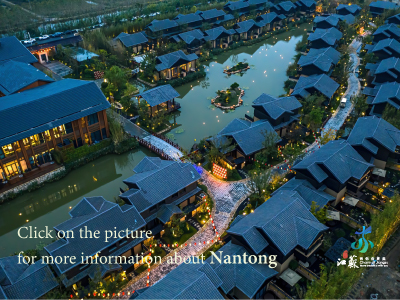Last month’s Hawaii wildfires devastated the US state, killing around 100 people, and causing widespread damage, particularly to the resort town of Lahaina. As the destination reckons with its disaster response, the local tourism industry, particularly on the hard-hit island of Maui, will likely be wondering what it has done to deserve the back-to-back plagues of the COVID-19 pandemic chased with the firestorm.
However, similar to the pandemic, learnings from the disaster will only serve to strengthen Hawaii in the long-term. The industry’s bouncebackability following a disaster has gotten stronger in all corners of the globe as different tourism markets have matured, with the travelling public’s response to COVID-19 serving as proof of concept.

This is a concept UTS adjunct fellow Dr. David Beirman has been researching for more than 30 years. During the time, he has been directly involved in destination recovery projects around the world, particularly wildfires, and is one of the foremost advocates for the tourism industry’s involvement in the disaster response process.
“Tourism needs a seat at the table,” Beirman said. “When governments, whether they’re local governments, provincial governments, or national governments, are trying to look at, how are we going to deal with potential natural disasters, the tourism industry needs that place at the table.” This belief is supported by another of Beirman’s key tenets, which is that a destination’s disaster recovery begins before the disaster occurs.
“I think we as tourism professionals need to enhance our risk management process readiness, and we also need to commit to developing risk management protocols,” he added. “While some airlines and cruise lines already have these extensive protocols in risk management, some other sectors of the industry are still in catch-up mode – that applies to hotels, and sometimes to attractions.”

Beirman’s views are shared by one of the world’s leading authorities on tourism, marketing, destination, branding, and image, Dr. Erin Ketter. The Israel-based lecturer teaches at Kinneret College, a renowned tourism school which also formerly counted Beirman among its professors. It is perhaps then no surprise Ketter is also a strong believer in the industry’s need for preparedness before disaster strikes.
“It is not what you do after the crisis, but what you plan before the crisis, what you should have done before,” Ketter told a World Tourism Network conference recently. “Investing in proactive operation and communicating planning.”
Despite the relative unsexiness of disaster preparation, it is one of the keys to a well-rounded tourism strategy, as Ketter described. One crisis simulation he once hosted for an Asian destination saw one of the most important executives at the organisation make a crucial error, which would have cost him his job were the situation actually unfolding.
RMIT Senior Lecturer Ancy Gamage, who specialises in the human resource dimension of tourism resilience and wildfire risk management response, has found during her research that a DMO’s collaboration with its stakeholder businesses is the first step to successful destination recovery post-disaster.
“Destination planning is a really key part of our recommendation, making sure different destinations were collaborating and communicating with each other,” she resonated. “It’s really important to start thinking about how we ensure business owners are able to be more attuned to those future challenges.

Like her colleagues, Gamage too believes the tourism industry should be better represented among decision-makers when it comes to disaster response.
“There’s been that conversation about ‘how do we bring the tourism economy into the discussion’, because there’s been some form of neglect in terms of how emergency management strategy impacts the destination,” she said.
Unfortunately, not all problems faced by a destination’s tourism economy are easily solved, especially in Australia, where bushfires are one of the key crises faced. “Factors that contribute to business vulnerability, such as insurance costs, are found to have increased by around 100% in those bushfire-affected regions,” Gamage revealed. “Relying on backpackers and the lack of housing or affordable housing has made it very difficult to bring workers back to the region, and therefore they’re having an impact on the operations of businesses.”
However, this is more a destination can do to help their key stakeholders prepare for such an incident. “There is a lack of formal risk management,” Gamage lamented. “In the tourism industry, a large amount of businesses are small, micro-businesses, part of the SME definition, and therefore those businesses didn’t have a formal risk management strategy,” she said.
“We also found businesses were able to recover faster if they had very strong collaboration and strong industry connections,” Gamage revealed. “We realised the importance of training and investing in industry development, understanding the unique needs of those business owners, especially regional destinations, and trying to make those destinations more resilient to future shocks.”
Beirman added: “[emergency management organisations] need to work together with the hoteliers, resort owners, conference organisers, events, all those sorts of different tourism-related organisations to make sure that there is there’s a rapid response and that everybody plays a role.” The consequences of failing to do so can be incredibly alienating for a community’s tourism industry.
“We aim for tourism infrastructure to be regarded as assets to the community,” Beirman said. “One of the interesting things that came out of Maui was the fact that there seemed to be some competition between local needs, and the needs of resorts, and that’s something which we have to look at, not only in the Hawaiian context, but globally.”
With almost 40 years of experience in the field, there are few who can be accurately described as Beirman’s “peers”, but the respect he has for Tourism Resilience Japan Chief Executive Officer Masato Takamatsu is clear. “If you are going to have an Olympic Games (of disaster response), it might be the Japanese (taking home gold),” Beirman joked.
As the leader of the world champions of catastrophe management, Takamatsu has plenty to worry about, given Japan is one of the most natural disaster-prone countries in the world. One of the nation’s tourism industry’s crowning achievements is the Fuji Five Lakers federation Tourism Crisis Response Manual, which exists as perhaps the gold standard in the field for all DMOs. “This private sector organisation took the initiative in developing crisis management manuals for operators,” Takamatsu explained.

The Fuji Five Lakes destination represents the area located at the base of Mt Fuji – referring specifically to the quintet of lakes formed by previous eruptions of its namesake active volcano, which tower 1,000 metres above. Fujiyoshida is the principal city in the region, and is particularly famous for its udon, as well as for being a jumping-off point to visit Mt Fuji and the lakes. The nearby Aokigahara, a forest on the northwestern flank of the Mt Fuji, was also formed by an eruption of the volcano, and is another popular tourism destination in the region, not least due to its notoriety as the ‘Suicide Forest’.
As a highly geologically active area which is popular with tourists, the Fuji Five Lakes federation is highly cognisant of the need for extensive tragedy pre-planning, particularly given it is located in a disaster-prone country. “Their priority is number one is the eruption of Mt Fuji, followed by an earthquake, heavy snowfall, a typhoon, and heavy rainfall,” Takamatsu described.
Together with the local city government, the tourism department, and the disaster prevention departments, the prefectural government agencies, and the Chamber of Commerce & Industry, the Fuji Five Lakes federation called for consultation and advice for its Tourism Crisis Response Manual. What was produced was, as Beirman stated, one of the benchmarks in tourism disaster preparedness. “The development of the Fuji Five Lakers federation Tourism Crisis Response Manual was a successful example the private and public collaboration,” Takamatsu added.
All the groundwork laid by organisations such as the Fuji Five Lakes federation is so, after a disaster occurs, a destination can send its key message as soon as possible; that is: “we are open for business,” Ketter revealed. “It is that prime message we have to send out, and whatever the process we have to encounter that give travellers a chance to be part of the right game!”
With a crisis, there also comes an opportunity to reimage and remarket a destination, which as Beirman suggested, he owes witness to over his decades of experience. Ketter in his years in the field has even seen destinations “turn their recovery into the story”.
“It’s a great period of time, its inspiration, changes happening,” he emphasised. “Glacier National Park every few years suffered from severe wildfires, and one of the strategies they’ve done through the years is design a new equation, meaning fire is a process in which the forest regenerates itself’, and through that, they were saying ‘okay, we’re not going to attract the same audience, we’re going to look at the sustainable, eco-travel market, and say, ‘we have here a natural process you can see in the forest, better understand the nature, the ecology, you can come to a place that feels natural again.”

Ketter also saw such a stance take hold following the Apr 2015 Nepal earthquake. “Tourists who were there immediately following the earthquake were handed out postcards with the hashtag #Nepalnow, and were asked to share the image on social media to their friends, and say ‘hey, we’re in Nepal now, we’re having great time’.”
He believes Hawaii can convey a similar message, that most of the destination is unaffected, and that tourism is back. “One [island] was affected, and not the entire island, but just a certain region of Maui,” he explained. “By limiting and reducing the scale of the crisis, you can actually convey a message for the other 80-90% of the territory.”
Even novel initiatives can have far-reaching effects during a time of crisis. David Beckham’s visit to Nepal following the 2015 earthquake saw the English former soccer player enlisted as part of a funding campaign, where he played gamers in Bhaktapur – a city in particular need of a tourism reimaging, given the ‘quake had destroyed one of its centuries-old UNESCO World Heritage Sites.
“The visit of David Beckham was a bigger success than any other VIP that came,” Ketter enthused. Another example saw Egypt run a US$99 famil trip after the Gulf War for travel advisors all over Europe. “In three months, we had over 3,000 travel consultants coming,” he gushed.
While it is difficult to sell positive news, Ketter firmly believes “it’s not over when it’s over”.
“It will be a long time and a lot more to invest in the recovery, because it will take time for people to get rid of these pictures of Maui burning, but coming back to my bottom line, it’s not what you do after the crisis, it’s what you planned before.”







